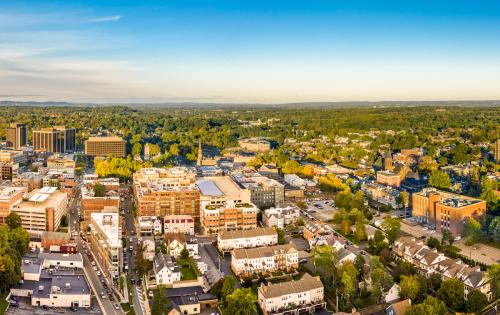The September jobs report shows continued weak growth in private sector employment combined with a big dose of bad news on government jobs. For the ninth consecutive month, private companies added to their payrolls. So far this year private firms have added an average of 96,000 jobs every month. The slow growth in private payroll employment is clearly disappointing. The pace of job growth remains far too slow to put a dent in unemployment. Nonetheless, the gain in private employment represents a major turnaround compared with 2009, when private payrolls shrank by an average of 488,000 every month.
The really bad news in the September report is the rapid falloff in public payrolls. Federal employment continued to shrink as a result of the end of temporary jobs connected to the 2010 census. However, these job losses simply reversed temporary federal employment gains that occurred earlier in the year.
Much more worrisome is the drop in employment in state and local government. The BLS reports that state and local payrolls fell 83,000 in September, offsetting nearly all the rise in private sector payrolls. State and local payrolls have been falling throughout the year, falling by an average of 30,000 a month since January. A large percentage of September’s payroll drop was in the field of education. The BLS estimates that state and local education payrolls fell more than 57,000, a startlingly big drop.
During the worst months of the recession government payrolls were largely insulated from the job losses that decimated employment in the private sector. Since December 2007, when the last recession began, private sector payrolls have shrunk 7.6 million, or slightly more than 6½%. Over the same period public payrolls fell less than 150,000, or about 0.7%. However, all of the drop in public employment has occurred since the start of this year, a period that saw private payrolls increase more than 860,000 while public payrolls shrank 250,000.
The job losses in state and local government are caused by the expected end of federal fiscal relief combined with a sizeable three-year decline in the state and local tax base. Federal fiscal relief under the administration’s stimulus program allowed state and local governments to maintain their payrolls throughout the economic downturn. But with weak revenue prospects and negligible chances that federal fiscal relief will continue, state and local governments must trim their payrolls. So long as private job creation remains weak, the loss of public jobs may mean that overall job growth will be negligible for several more months.



Commentary
Private Job Creation Remains Weak, but the Decline in Public Payrolls Accelerates
October 8, 2010